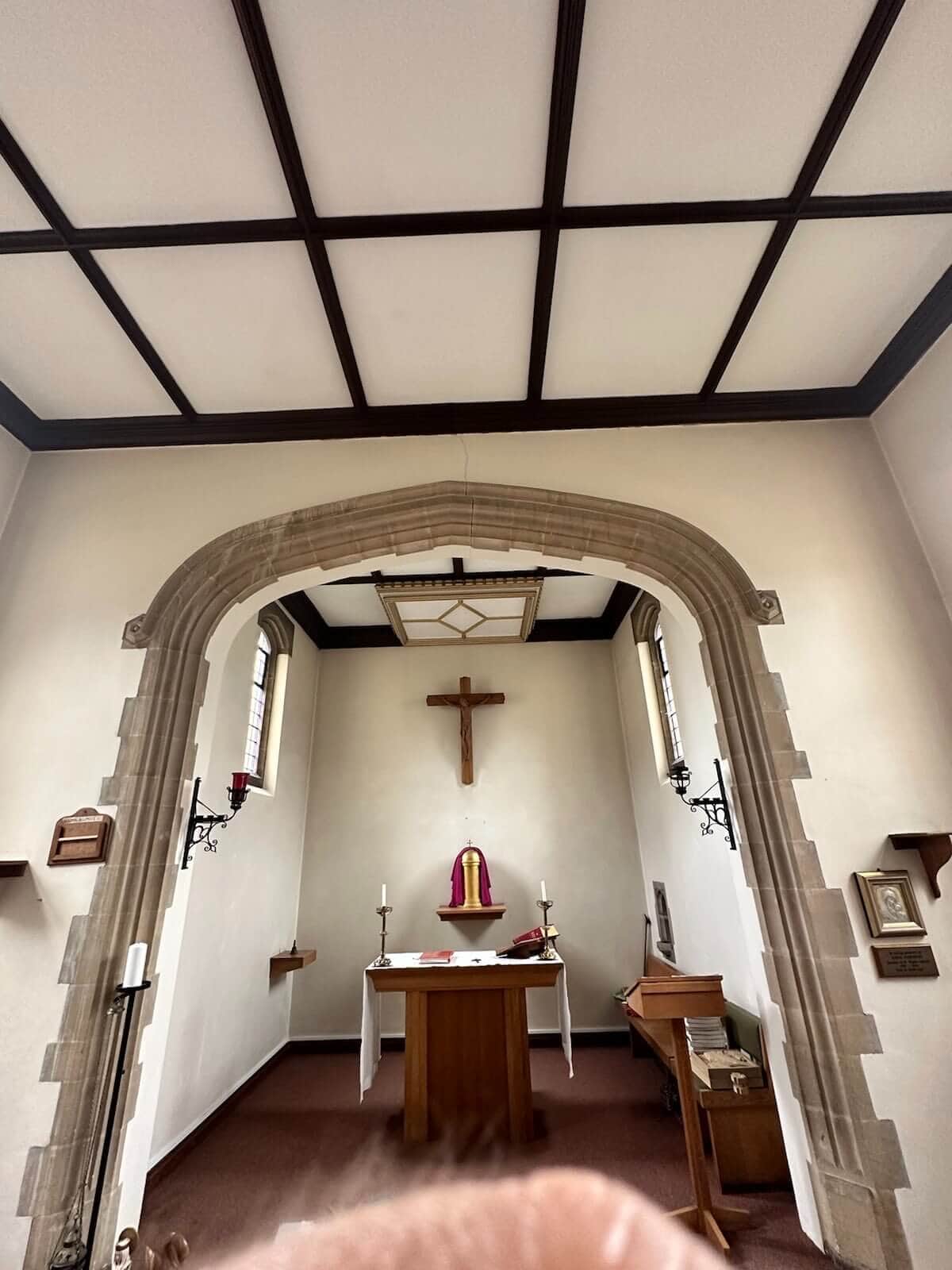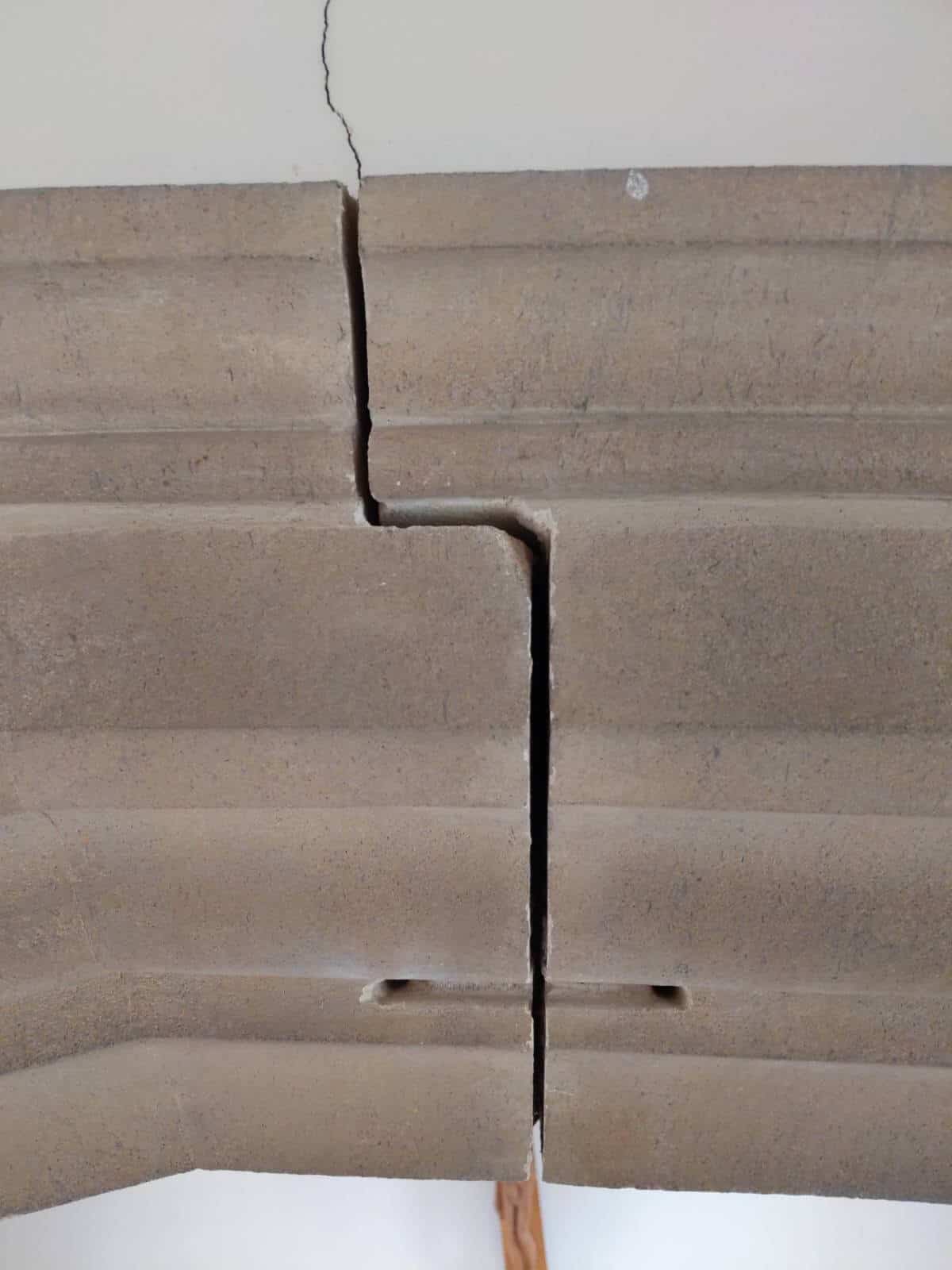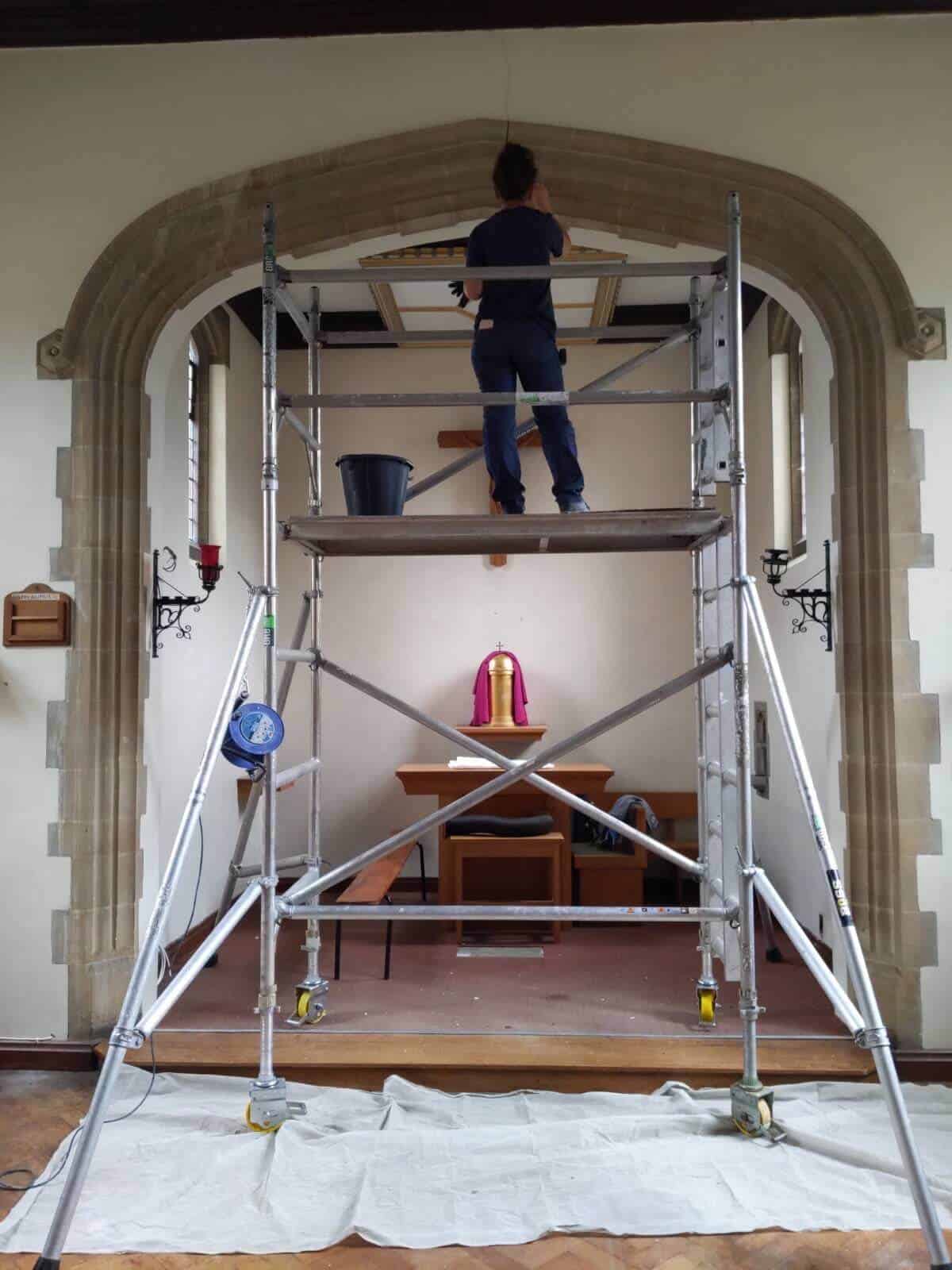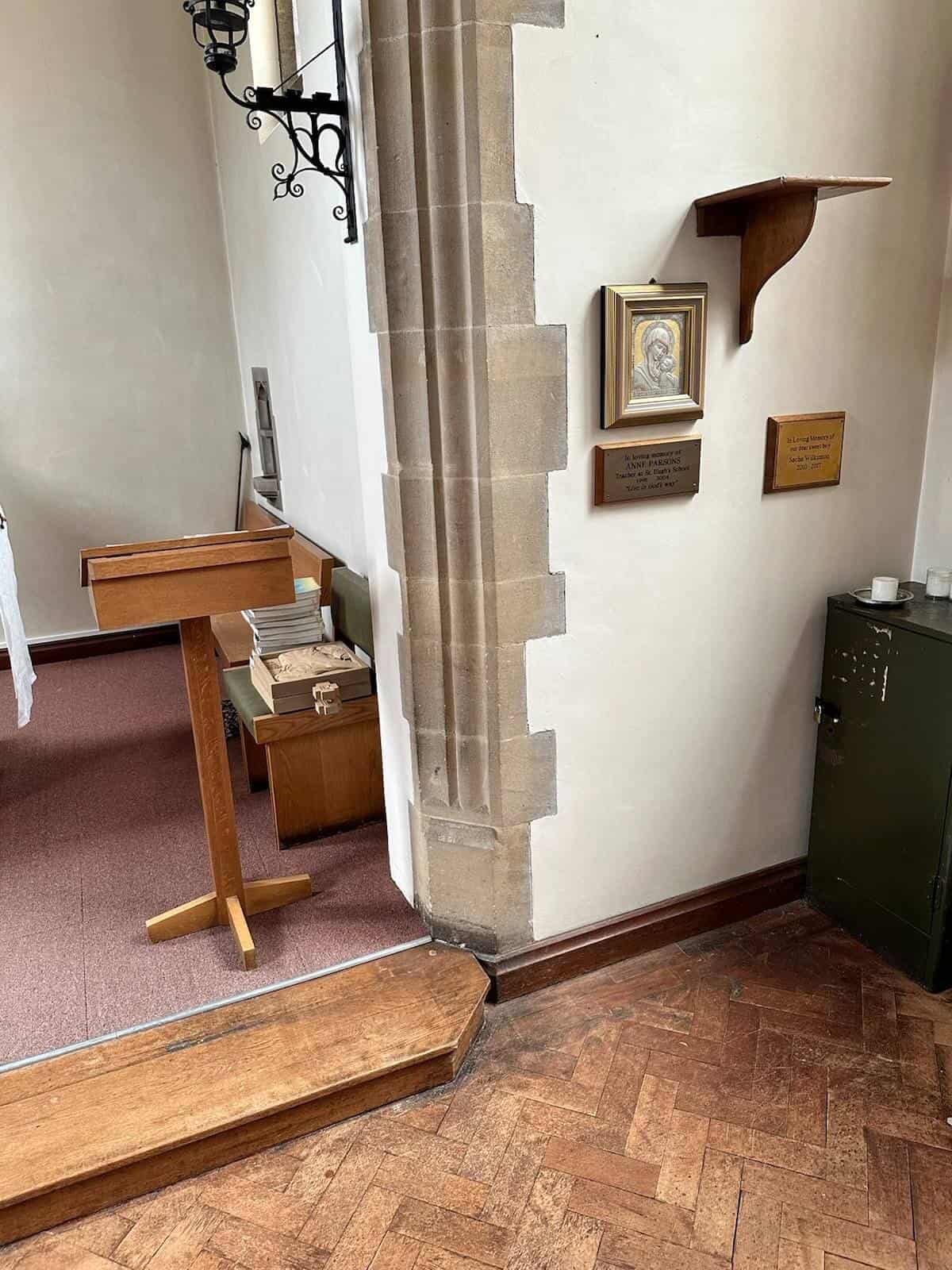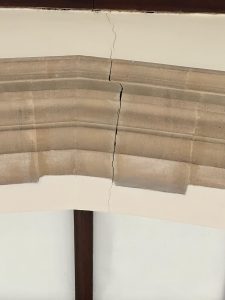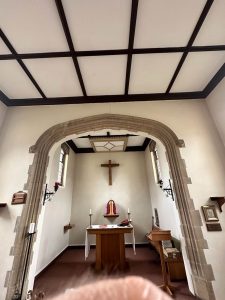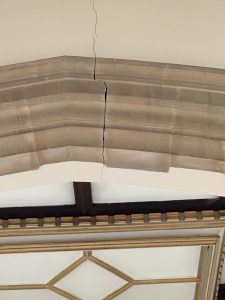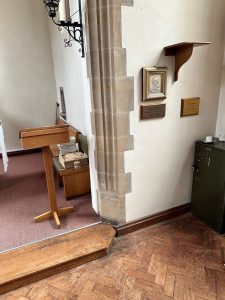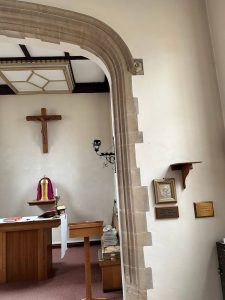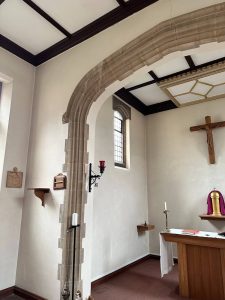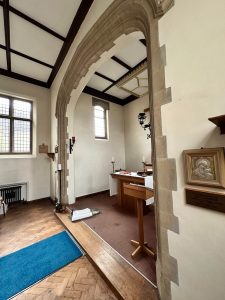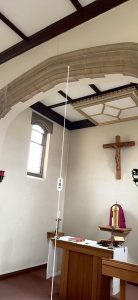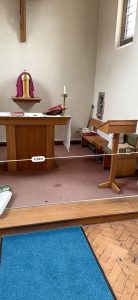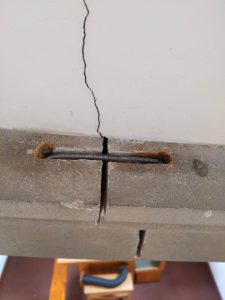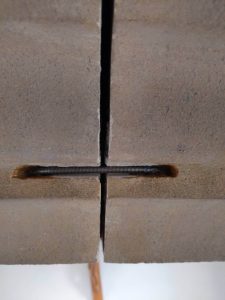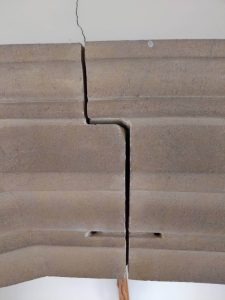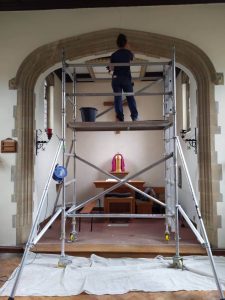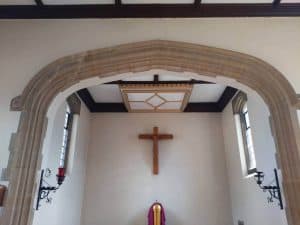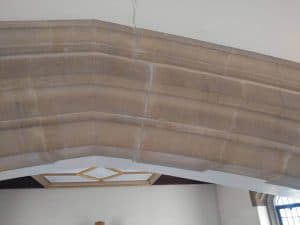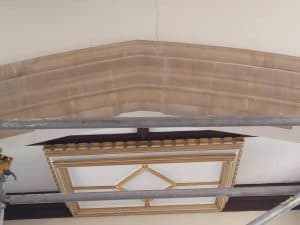Description: Repair sandstone block – Chapel
Location: Ware, England
Surface: Sandstone blocks
Services: Restoration
Sandstone, with its timeless beauty and durability, has long been a favourite material for architectural masterpieces. However, like any natural stone, it is susceptible to the ravages of time and environmental factors. In this article, we will take you on a journey through the meticulous restoration of sandstone blocks on a historic chapel in the Ware area. These sandstone blocks had developed cracks due to water infiltration, compromising their structural integrity. Our team of expert technicians meticulously inspected, repaired, and cosmetically restored these magnificent stones, breathing new life into the chapel’s façade.
Step 1: Assessment of Damage
The restoration process began with a thorough assessment of the damage to the sandstone blocks. Cracks, particularly in the joint areas, were the primary concern. These cracks were the result of water infiltration over the years, a common issue with porous materials like sandstone. Our technicians examined the extent of the damage to determine the best course of action.
Step 2: Structural Repairs
To restore the structural integrity of the sandstone blocks, our skilled technicians employed a meticulous approach. Metal inserts were carefully clamped between the cracked stones. These inserts not only stabilised the blocks but also prevented further separation of the stones, ensuring their long-term stability.
Step 3: Cosmetic Repair
With the structural repairs completed, it was time to address the aesthetic aspect of the restoration. Achieving a seamless and authentic appearance was crucial to preserving the historical charm of the chapel. To achieve this, we used a lime-based adhesive, a material known for its compatibility with historic masonry. This adhesive not only bonds well with sandstone but also allows for flexibility, accommodating the natural movement of the stone over time.
Step 4: Colour Matching
Matching the colour and texture of the repaired sections with the existing sandstone finish was a painstaking but essential part of the process. To achieve this, we utilised crashed sandstone dust, carefully selecting particles that closely resembled the original stone. The mixture of the lime-based adhesive and crashed sandstone dust was expertly applied to the repaired areas, creating a virtually indistinguishable blend with the surrounding sandstone.
Step 5: Finishing Touches
The final touches involved smoothing and shaping the repaired areas to blend seamlessly with the rest of the chapel’s façade. This required the expertise of our artisans, who meticulously recreated the intricate details and textures of the original sandstone finish.
Conclusion
The restoration of the sandstone blocks on the chapel serves as a testament to the commitment to preserving architectural heritage. The process, from structural repairs to cosmetic restoration, demanded a combination of expertise, dedication, and an unwavering respect for history.
This restoration project stands as a reminder of the importance of preserving our architectural heritage and the skill and care required to do so. Through meticulous restoration techniques and a deep appreciation for the past, we have ensured that this cherished piece of Ware’s history will endure for generations to come.


